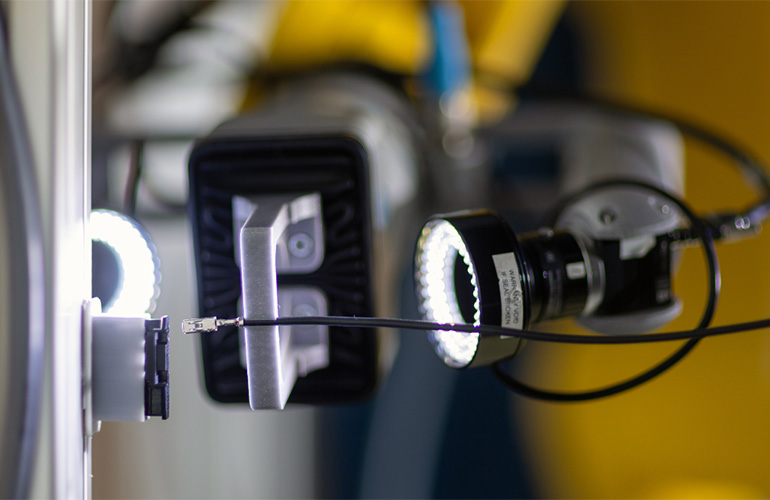|
Listen to this article  |

MIRAI 2 is the latest generation of Micropsi Industries’ AI-vision software. | Source: Micropsi Industries
Micropsi Industries today announced MIRAI 2, the latest generation of its AI-vision software for robotic automation. MIRAI 2 comes with five new features that the company says enhance manufacturers’ ability to reliably solve automation tasks with variance in position, shape, color, lighting, or background.
The Berlin, Germany-based company says MIRAI 2 offers users even greater reliability, easier and faster deployment, and robot-fleet scalability. MIRAI 2 is available immediately.
“MIRAI 2 is all about scale: It’s MIRAI for more powerful robots, larger fleets of robots, and tougher physical environments, and it brings more tools to prepare for changes in the environment,” Ronnie Vuine, founder of Micropsi Industries and responsible for product development, said in a release. “We’ve let our most demanding automotive OEM customers drive the requirements for this version without sacrificing the simplicity of the product. It still wraps immensely powerful machine learning in a package that delivers quick and predictable success and is at home in the engineering environment it’s being deployed in.”
5 new functions available with MIRAI 2
MIRAI is an advanced AI-vision software system that enables robots to dynamically respond to varying conditions within the factory environment. Micropsi Industries highlighted five new functions available with MIRAI 2:
- Robot skill-sharing: This new function allows users to share skills between multiple robots at the same site or elsewhere. If the conditions at the sites are identical, which could include lighting, background, and more, then users need very little or no additional training when adding installations. The company says it can also handle small differences in conditions by recording data from multiple installations into a single, robust skill.
- Semi-automatic data recording: Semi-automatic training allows users to record episodes of data for skills without having to hand-guide the robot. Micropsi Industries said this feature reduces the workload on users and increases the quality of recorded data. Additionally, MIRAI can now automatically record all relevant data. Users only need to prepare the training situations and corresponding robot target poses.
- No F/T sensor: Users can train and run skills without connecting a force/torque sensor. The company says this reduces costs, simplifies tool geometry and cabling setup, and makes skill applications more robust and easier to train overall.
- Abnormal condition detection: MIRAI can now be configured to stop skills when unexpected conditions are encountered, allowing users to handle these exceptions in their robot program or alert a human operator.
- Industrial PC: The MIRAI software can now be run on a selection of industrial-grade hardware for higher dependability in rough factory conditions.
MIRAI 2 detects unexpected workspace situations
MIRAI can pick up on variances in position, shape, color, lighting, and background. It can operate with real factory data without the need for CAD data, controlled light, visual feature predefinition, or extensive knowledge of computer vision.
MIRAI 2 offers customers improved reliability thanks to its ability to detect unexpected workspace situations. The system has a new, automated way to collect training data and the option to run the software on the highest industry-standard PCs. This results in higher dependability in rough factory conditions.
MIRAI 2’s new features assist in recording the required data for training robots, which means that training the system is easier and faster. Additionally, the system comes equipped with MIRAI skills, which are trained guidelines that tell robots how to behave when performing a desired action. These can now be easily and quickly shared with an entire fleet of robots.
“By integrating new features and capabilities into our offerings, we can address the unique challenges faced by these industries even more effectively,” Gary Jackson, recently appointed CEO of Micropsi Industries, said in a release. “Recognizing the complexities of implementing advanced AI in robotic systems, we’ve assembled expert teams that combine our in-house talent with select system integration partners to ensure that our customers’ projects are supported successfully, no matter how complex the requirements.”
Credit: Source link


Comments are closed.